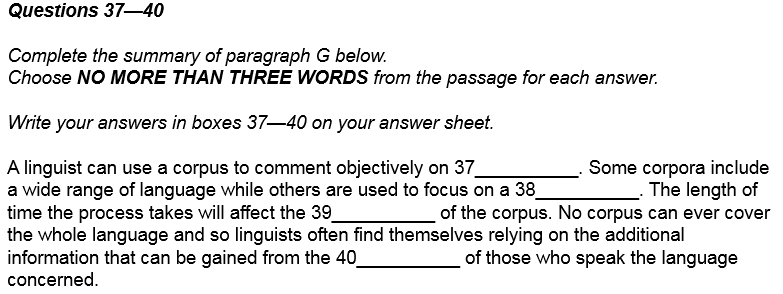为了让大家更好的准备托福考试,小编给大家整理新托福阅读背景知识汇总,下面小编就和大家分享,来欣赏一下吧。
新托福阅读背景知识:英属北美殖民地的建立
The continent's first inhabitants walked into North America across what is now the Bering Strait from Asia. For the next 20,000 years these pioneering settlers were essentially left alone to develop distinct and dynamic cultures. In the modern US, their descendants include the Pueblo people in what is now New Mexico; Apache in Texas; Navajo in Arizona, Colorado and Utah; Hopi in Arizona; Crow in Montana; Cherokee in North Carolina; and Mohawk and Iroquois in New York State.
The Norwegian explorer Leif Eriksson was the first European to reach North America, some 500 years before a disoriented Columbus accidentally discovered 'Indians' in Hispaniola (now the Dominican Republic and Haiti) in 1492. By the mid-1550s, much of the Americas had been poked and prodded by a parade of explorers from Spain, Portugal, England and France.
The first colonies attracted immigrants looking to get rich quickly and return home, but they were soon followed by migrants whose primary goal was to colonize. The Spanish founded the first permanent European settlement in St Augustine, Florida, in 1565; the French moved in on Maine in 1602, and Jamestown, Virginia, became the first British settlement in 1607. The first Africans arrived as 'indentured laborers' with the Brits a year prior to English Puritan pilgrims' escape of religious persecution. The pilgrims founded a colony at Plymouth Rock, Massachusetts, in 1620 and signed the famous Mayflower Compact - a declaration of self-government that would later be echoed in the Declaration of Independence and the US Constitution. British attempts to assert authority in its 13 North American colonies led to the French and Indian War (1757-63). The British were victorious but were left with a nasty war debt, which they tried to recoup by imposing new taxes. The rallying cry 'no taxation without representation' united the colonies, which ceremoniously dumped caffeinated cargo overboard during the Boston Tea Party. Besieged British general Cornwallis surrendered to American commander George Washington five years later at Yorktown, Virginia, in 1781. In the 19th century, America's mantra was 'Manifest Destiny.' A combination of land purchases, diplomacy and outright wars of conquest had by 1850 given the US roughly its present shape. In 1803, Napoleon dumped the entire Great Plains for a pittance, and Spain chipped in with Florida in 1819. The Battle of the Alamo during the 1835 Texan Revolution paved the way for Texan independence from Mexico, and the war with Mexico (1846-48) secured most of the southwest, including California.
The systematic annihilation of the buffalo hunted by the Plains Indians, encroachment on their lands, and treaties not worth the paper they were written on led to Native Americans being herded into reservations, deprived of both their livelihoods and their spiritual connection to their land. Nineteenth-century immigration drastically altered the cultural landscape as settlers of predominantly British stock were joined by Central Europeans and Chinese, many attracted by the 1849 gold rush in California. The South remained firmly committed to an agrarian life heavily reliant on African American slave labor. Tensions were on the rise when abolitionist Abraham Lincoln was elected president in 1860. The South seceded from the Union, and the Civil War, by far the bloodiest war in America's history, began the following year. The North prevailed in 1865, freed the slaves and introduced universal adult male suffrage. Lincoln's vision for reconstruction, however, died with his assassination. America's trouncing of the Spaniards in 1898 marked the USA's ascendancy as a superpower and woke the country out of its isolationist slumber.
The US still did its best not to get its feet dirty in WWI's trenches, but finally capitulated in 1917, sending over a million troops to help sort out the pesky Germans. Postwar celebrations were cut short by Prohibition in 1920, which banned alcohol in the country. The 1929 stock-market crash signaled the start of the Great Depression and eventually brought about Franklin Roosevelt's New Deal, which sought to lift the country back to prosperity. After the Japanese dropped in uninvited on Pearl Harbor in 1941, the US played a major role in defeating the Axis powers. Atomic bombs dropped on Hiroshima and Nagasaki in 1945 not only ended the war with Japan, but ushered in the nuclear age. The end of WWII segued into the Cold War - a period of great domestic prosperity and a surface uniformity belied by paranoia and betrayal. Politicians like Senator Joe McCarthy took advantage of the climate to fan anticommunist flames, while the USSR and USA stockpiled nuclear weapons and fought wars by proxy in Korea, Africa and Southeast Asia. Tensions between the two countries reached their peak in 1962 during the Cuban Missile Crisis.
The 1960s was a decade of profound social change, thanks largely to the Civil Rights movement, Vietnam War protests and the discovery of sex, drugs and rock & roll. The Civil Rights movement gained momentum in 1955 with a bus boycott in Montgomery, Alabama. As a nonviolent mass protest movement, it aimed at breaking down segregation and regaining the vote for disfranchised Southern blacks. The movement peaked in 1963 with Martin Luther King Jar’s 'I have a dream speech' in Washington, DC, and the passage of the landmark 1964 Civil Rights Act and 1965 Voting Rights Act. Meanwhile, America's youth were rejecting the conformity of the previous decade, growing their hair long and smoking lots of dope. 'Tune in, turn on, drop out' was the mantra of a generation who protested heavily (and not disinterestedly) against the war in Vietnam. Assassinations of prominent political leaders - John and Robert Kennedy, Malcolm X and Martin Luther King Jar - took a little gloss off the party, and the American troops mired in Vietnam took off the rest. NASA's moon landing in 1969 did little to restore national pride. In 1974 Richard Nixon became the first US president to resign from office, due to his involvement in the cover-up of the Watergate burglaries, bringing American patriotism to a new low.
The 1970s and '80s were a period of technological advancement and declining industrialism. Self image took a battering at the hands of Iranian Ayatollah Khomeini. A conservative backlash, symbolized by the election and popular two-term presidency of actor Ronald Reagan, sought to put some backbone in the country. The US then concentrated on bullying its poor neighbors in Central America and the Caribbean, meddling in the affairs of El Salvador, Nicaragua, Panama and Grenada. The collapse of the Soviet Bloc's 'Evil Empire' in 1991 left the US as the world's sole superpower, and the Gulf War in 1992 gave George Bush the opportunity to lead a coalition supposedly representing a 'new world order' into battle against Iraq. Domestic matters, such as health reform, gun ownership, drugs, racial tension, and gay rights, balancing the budget, the tenacious Whitewater scandal and the Monica Lewinsky 'Fornicate' affair tended to overshadow international concerns during the Clinton administration. In a bid to kick start its then-ailing economy, the USA signed NAFTA, a free-trade agreement with Canada and Mexico, in 1993, invaded Haiti in its role of upholder of democracy in 1994, committed thousands of troops to peacekeeping operations in Bosnia in 1995, hosted the Olympics in 1996 and enjoyed, over the past few years, the fruits of a bull market on Wall St. The 2000 presidential election made history by being the most highly contested race in the nation's history.
The Democratic candidate, Al Gore, secured the majority of the popular vote but lost the election when all of Florida's electoral college votes went to George W Bush, who was ahead of Gore in that state by only 500 votes. Demands for recounts, a ruling by the Florida Supreme Court in favor of partial recounts, and a handful of lawsuits generated by both parties were brought to a halt when the US Supreme Court split along party lines and ruled that all recounts should cease. After five tumultuous weeks, Bush was declared the winner. The early part of Bush's presidency saw the US face international tension, with renewed violence in the Middle East, a spy-plane standoff with China and nearly global disapproval of US foreign policy with regard to the environment. On the domestic front, a considerably weakened economy provided challenges for national policymakers. Whether the US can continue to hold onto its dominant position on the world stage and rejuvenate its economy remains to be seen.
英属北美殖民地的建立(1607--1733)
北美洲原始居民为印第安人。16-18世纪,正在进行资本原始积累的西欧各国相继入侵北美洲。法国人建立了新法兰西(包括圣劳伦斯流域下游大潮区,密西西比河流域等处);西班牙人建立了新西班牙(包括墨西哥和美国西南部的广大地区)。1607年,英国建立了第1个殖民据点—詹姆士城,此后在大西洋沿岸陆续建立了13个殖民地。到达殖民地的大多数是西欧贫苦的劳动人民,也有贵族、地主、资产阶级,以英国人、爱尔兰人、德意志人和荷兰人最多。移民中有逃避战祸和宗教迫害者,有自愿和非自愿的“契约奴”以及乞丐、罪犯;还有从非洲被贩运来的黑人。
新托福阅读背景知识:“五月花”号
讨论“五月花号”,先谈谈事件发生的背景,不仅很有必要,而且很有意义。它可以让我们看清事件的本质,了解人类历史上的专制、暴政的荒谬及其对渴望自由的人类精神的无奈。这不仅是北美移民昭示天下的真理,它也证明了这个星球上人类渴望自由的力量。
“五月花号”事件发生的背景简略说分两个方面,一个是精神方面的,即发生于十六世纪初的宗教改革。它由德国神学博士、神父马丁·路德于1517年10月31日发难。这一天,路德神父在维登堡教堂张贴反对罗马教廷和教皇的《九十五条论纲》,引发了一场震撼整个欧洲的宗教革命。马丁·路德的宗教改革不是要废除宗教,而是要改革__。他认为,人类靠信仰得救,这叫做“因信称义”。根据这一原则,信徒不需要在与上帝之间有个教皇,也不需要那么多仪式,更不需要买赎罪符。这样,教士也没理由享受特权,所有信徒平等。他提出世俗权力归君主,因为“君权是上帝委派”。这种主张显然表达了资产阶级要求建立近代民族国家的愿望。根据马丁·路德的宗教观建立的教会被称为新教。
在马丁·路德发起宗教改革的同时,另一个宗教改革的中心在瑞士出现。其领导人物为乌尔利希·慈温利。此人宣传宗教改革的思想,在时间上不晚于马丁·路德,观点比路德更激进。但是,他去世早,身后名声不如路德大。慈温利原是瑞士天主教会的神父。他1516年开始宣传宗教改革思想,1519年在苏黎世大教堂传教,反对教皇在瑞士出售赎罪券。1522年慈温利与教皇公开决裂。1523年至1524年1月,他三次参加苏黎世宗教问题大辩论,获得苏黎世州政府的支持。慈温利反对依赖君主、诸侯,反对天主教的教阶制、偶像崇拜、繁文缛节,要求解散修道院。他主张的新教会实行共和制。1531年,慈温利在与天主教支持的奥地利政府军作战中阵亡。在慈温利死后不久,有一个名叫约翰·加尔文的法国新教徒,因受法国政府迫害流亡到瑞士。1536年,加尔文发表《__信仰典范》。加尔文与路德一样,主张“信仰得救”,建立清廉的教会。但他与慈温利一样,比路德更激进,主张按共和制的原则建立教会。他用五年时间的努力成为日内瓦教会的领袖,把日内瓦变成一个政教合一的神权国家。在日内瓦,加尔文实行严厉的统治。在取消一切浮华宗教仪式的同时,取缔了赌博,也禁止所有的文艺娱乐活动,乃至思想自由。因此,曾引发一场卡斯特利奥反抗加尔文的悲壮斗争。关于这一事件,著名作家斯·茨威格曾写过一本小册子叫《异端的权利》,提出了一个重要命题:宗教宽容、思想宽容问题。不过,加尔文的新教思想推动了尼德兰革命,促成了世界上第一个资产阶级共和国—荷兰共和国的诞生。我花一些时间来介绍宗教改革,主要因为包括美国文明在内的西方近代文明,受宗教改革出现的新教思想影响很大。著名思想家马克斯·韦伯曾为此专门写过一本《新教伦理与资本主义精神》。
欧洲宗教改革思潮传入英国,英国国王亨利八世因与罗马教皇的矛盾,而接受新教思想实行宗教改革。在欧洲,德国、瑞士等国的宗教改革是自下而上推行的。而英国,由于国王与教皇的冲突,使得英国的宗教改革由国家自上而下推行。1533年,英王下令与罗马教廷决裂,禁止英国教会向罗马纳年贡。1534年,英国国会通过“至尊法案”,宣布英王为英国教会最高首脑,将任命教会教职、召集宗教会议的权力转归国王,又把宗教法庭改为国王法庭。改革后的宗教称为英国国教,保留了天主教的主教制度、仪式和重要教义。自亨利八世至爱德华六世统治期间的二十年,由于后来加尔文教的影响,英国国教与天主教更加疏远。但是,继爱德华六世之后上台的玛丽女五是个虔诚的天主教徒。她曾嫁给西班牙国王腓力二世,即位后奉行亲西班牙政策,恢复天主教,迫害新教徒。她掌权五年,烧死三百多个宗教“异端”。等到玛丽女王下台,伊丽莎白女王上台重申宗教改革时,国内已经形成崇奉加尔文教要求彻底改革国教的清教派。英国历史上所谓的“清教徒”,是指要求彻底清除国教中天主教残余的加尔文教徒。这批人至十六世纪末十七世纪初,也即“五月花号”事件发生前夕分成两派:一派是温和派,称长老会派,主张在英国建立加尔文教那样的教会,由长老会管理教会;另一派为更激进的独立派,他们反对教会隶属于国家,要求各教区的教会完全独立,信徒自治管理。“五月花号”中的清教徒主要属于后一派。这一派的自治管理理念,在移民北美后,对英属北美殖民地的政治发展有重大影响。由于清教徒改革国教的主张,否定英王对宗教的掌控权,与英国国王相抵触,所以即使与罗马教廷有冲突的伊丽莎白女王及其后的英国国王,也都对清教徒实行高压政策。在这种情况下,清教徒们一则为了坚持自己的信仰,另则为了躲避国内镇压,纷纷潜逃出境。因为当年荷兰是加尔文教占上风的国家,英国清教徒在出逃北美前,首选地一般都是荷兰。“五月花号”上的清教徒就曾在1607—1608年期间,从英国诺丁汉郡逃往荷兰,在荷兰生活了十一二年。后来这些人才从荷兰潜回英国普利茅斯,再从普利茅斯乘“五月花号”移民北美的。其间的曲折可谓一言难尽。这是“五月花号”事件政治、思想、精神层面的背景。
另一方面,与“五月花号”事件相关联的是空间方面的背景。所谓空间背景,是指“五月花号”乘客出逃的空间条件。空间条件,指逃跑者可以逃跑的地方。如果没有哥伦布于1492—1493年发现新大陆,以及此后一百多年的欧洲向美洲移民,“五月花号”是不可能选择北美作为逃亡地的。正是美洲大陆的发现,为“五月花号”以及其他清教徒坚持自己信仰,躲避宗教迫害,实现自己建设“上帝之城”的梦想提供了实践空间。
前面提到“五月花号”的种.种争议,但是,有一点是不争的事实,即历史上确实发生过这件事。按一般记载,这件事发生在1620年9月6日—11月9日(另说:9月16日—11月19日),一艘名叫“五月花号”的木帆船,载着一百零一名英国移民从英国普利茅斯出发,横渡大西洋,驶往北美洲今天的马萨诸塞湾。从有关史料看,这批移民以受迫害的英国清教徒为主。这些清教徒属于一个叫莱登弥撒团的成员,后来被称为朝圣者。他们约占“五月花号”全体成员的三分之二。这部分人去北美的目的很明确,是要实现清教徒的理想,建设一个理想国,一个没有君主专制、没有腐败的民治共同体。此外,还有一部分契约奴。契约奴,指无钱前往北美,与一些英国的公司或商人签立契约的人。这些人有穷人或落魄贵族想到北美发财的,也有逃犯。他们签立契约后,由公司或商人为他们支付从英国到北美的旅费,有的还提供途中和抵达目的地一段时间的花销。契约奴抵达目的地后在四至七年内用劳动偿还。在此期间内,契约奴可以被买卖。“五月花号”上的这些人经过六十五天的惊涛骇浪,在海上航行三千英里,抵达北美洲后来被称为科德角的海湾。11月的北半球寒风凛冽。想想这些人为了自由、为了信仰竟然义无反顾地抛弃文明世界,投身荒野,踏上荒无人烟、一无所有的海滩,其悲壮的情景不仅是欧美历史上的骄傲,也应是整个人类文明史上的骄傲。那是人类反抗君主专制、争取信仰自由的壮丽篇章。
新托福阅读背景知识:独立战争
独立战争 (1774—1783)
英法为争夺海上霸权和掠夺殖民地而进行的七年战争,以英国胜利告终。英国在北美接管了加拿大,控制了密西西比河以东的新法兰西,对北美殖民地全面加强控制,宣告阿巴拉契亚山脉以西为王室产业,禁止殖民地人民染指;并征收重税,严厉缉私,限制经济活动,严重损害了殖民地各阶层人民的经济利益。从1619年弗吉尼亚建立议会起,各殖民地相继成立议会,与英国相抗衡,1765年9个殖民地举行抗议印花税大会,掀起反抗怒潮。
18世纪70年代英国进一步执行高压政策,1770年波士顿惨案发生。1773年通过了茶税法,引起波士顿倾茶事件。1774年颁布了5项不可容忍的法令(诸如封闭波士顿港,增派英国驻军,取消马萨诸塞自治权,确立英国对殖民地的司法权等),从政治上军事上加紧对殖民地的控制与镇压。1772-1774年,各殖民地普遍成立通讯委员会,领导抗英斗争。1774年9月5日,除佐治亚外的各殖民地代表在费城召开了第1届大陆会议,通过了和英国断绝一切贸易关系的决议,继而通过“关于殖民地权利和怨恨的宣言”,向英王呈递请愿书。1775年4月18日,在波士顿附近的列克星敦和康科德,殖民地爱国者打响了反抗的枪声,揭开了独立战争的序幕。5月,第2届大陆会议召开。次年7月大陆会议通过独立宣言,宣布13个殖民地脱离英国独立。
独立战争开始时,双方实力悬殊,战争进行了8年。到1781年10月,美、法联军攻下英军最后据点约克镇,独立战争基本结束。1783年英美签订巴黎和约。独立战争时期涌现出一批杰出的政治家,如大陆军的总司令G.华盛顿、《独立宣言》的起草人T.杰斐逊、外交家B.富兰克林、文化战士T.潘恩。
印花税条例 (Stamp Act)
波士顿惨案 (Boston Massacre)
大陆会议 (Continental Congress)
独立战争 (War of independence)
独立宣言 (Declaration of Independence)
独立的民族主权国家的建成(1781-1814)
在战争过程中,大陆会议制订了邦联条例,1781-1787年13州组成了邦联国会,宣布成立美利坚共和国。1787年,在费城召开制宪会议,大州和小州的代表经过争论,同意每州均选出两名参议员;在蓄奴制问题上,北部对南部作出了重大妥协,默认奴隶制存在,在征税及分配众议员席位方面,南部黑奴均以3/5的人口计算。会议最后制定了宪法草案。这是世界上第1部成文宪法。1788年6月由9个州批准生效。根据宪法,美国建成立法、行政、司法三权分立、相互制衡的联邦制国家。后又增加了宪法前10条修正案(后即以“权利法案”著称)。该法案于1791年12月,经11个州批准生效。
1789年联邦政府成立。4月,华盛顿就任美国首届总统(1792年连任)。在国内外政策出现分歧的过程中,财政部长A.汉密尔顿派组织了联邦党,主张中央集权,外交上亲英,控制了联邦政府的权力。国务卿T.杰斐逊派主张维护国内人民民主权利,同情法国革命,组织了民主共和党。1793年华盛顿在欧洲列强联合干涉法国革命时,采取中立政策。次年11月,联邦政府和英国签订了损害美国主权的杰伊条约。亲英和亲法成为联邦党和民主共和党在外交政策上的分野。在内政方面,联邦政府制定关税条例,建立银行,稳定经济。
1801年,民主共和党T.杰斐逊出任总统。杰斐逊政府废除上述4项法令,削减开支,减轻税收,取消酒税,鼓励农产品出口。1803年从法国手中购买了面积达200多万平方公里的路易斯安那。英国一直不甘心丧失北美殖民地。英舰在公海上继续拦截美国船只,强制征用美国海员。为维护航海自由,1812—1814年美国进行了第2次对英战争。除海战外,优势在英军方面。1814年8月,英军曾攻占华盛顿首府,焚烧总统府及会。但随后美国取得胜利。1814年12月,英美在今比利时的根特签订和约。这次战争使美国得以摆脱英国政治上的控制和经济上的渗透,成为一个完全独立的民族主权国家。
上一篇:新托福阅读背景知识精选5篇





